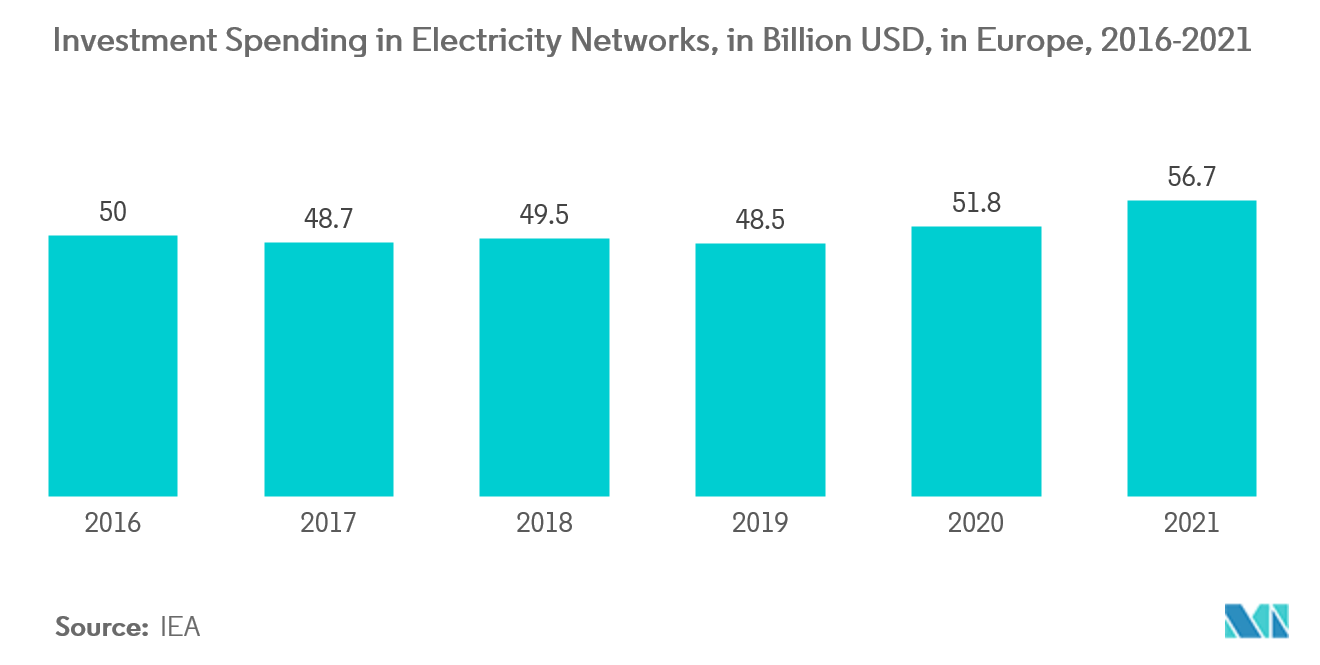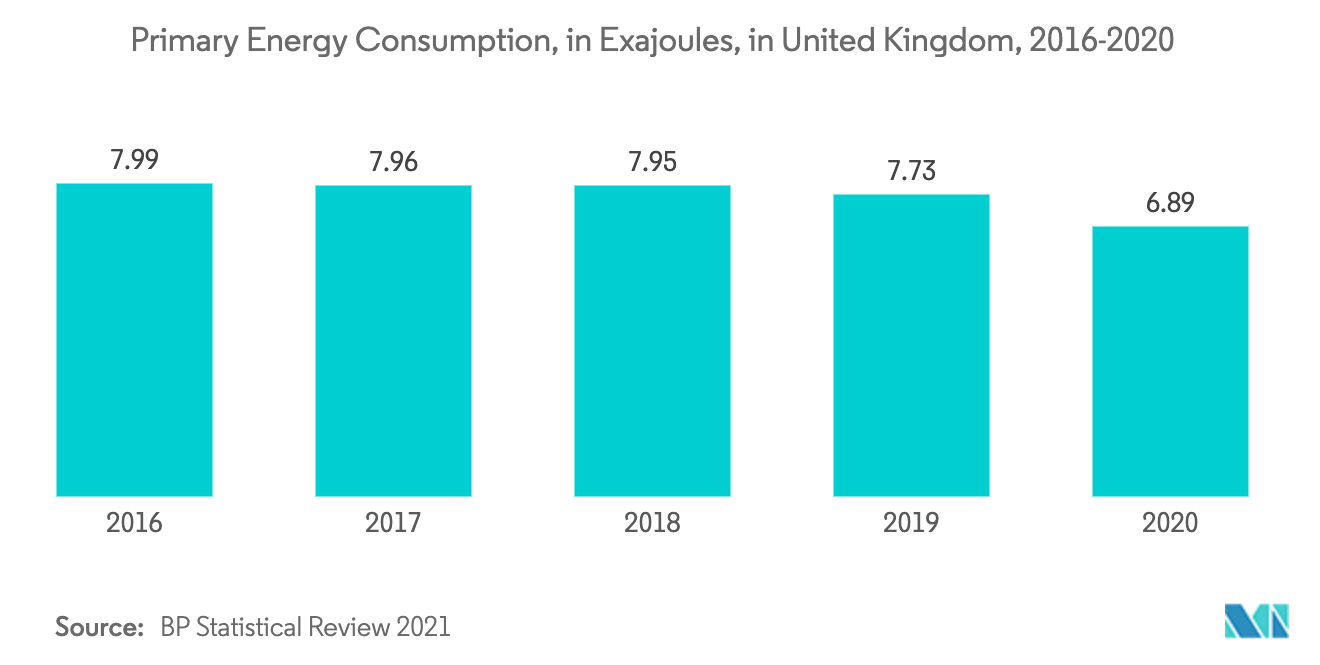Market Trends of Europe Automated Demand Response Industry
This section covers the major market trends shaping the Europe Automated Demand Response Market according to our research experts:
Increased Adoption of Smart Grid Technologies
- Automated demand response systems (ADRMS), including intelligent grids, are being applied across power systems, including generation, transmission, distribution, services, and consumption. With the successful and widespread development of smart grids, European countries expect a high-quality electric power service, better system reliability, and improved quality of service. Thus, maximized energy usage and savings, higher penetration, and greater use of renewable energy sources (to capture environmental benefits) can be enabled.
- One of the critical features of ADRMS is that they provide consumers and suppliers with real-time knowledge on system performance, energy consumption, and decision-making tools that empower stakeholders to provide quality power supply and optimum usage of energy resources. Thus, smart grids are also essential for expanding the use of ADRMS. Smart grids can enable demand flexibility and consumer participation in energy systems through ADRMS.
- Further, electricity providers are bombarded with challenges in maintaining grid stability and maintaining the power supply. Peak-load variability is rising, and solutions, like building more fossil fuel-fired peaking plants (once common), are no longer defaults for solving energy issues.
- To meet these challenges, intelligent grid networks have encouraged the widespread adoption and applicability of ADRMS.
- European countries are implementing large-scale smart grid technologies, and many developing countries are also adopting various smart grid components into their power systems. Demand-side management is the need of the hour for any grid. With a rise in smart grid technologies, ADRMS is a key demand-side management strategy that is expected to provide a cost-effective alternative to traditional supply-side solutions, to address increasing electricity demand during times of peak load or when prices are high.
- Further, In European Union, grid expansion plans for 2021-2030 provide the foundation for increased investment, supported by economic recovery schemes. While the European Commission's 2030 climate ambition plan released in September 2020 foresees annual grid investments of ~USD 70 billion during 2021-2030. Moreover, investments are set to be even higher owing to its July 2021 Fit for 55 plan, which aims for emissions in 2030 to be 55% lower than in 1990 (compared with the previous plan's 40% reduction).
- Hence, investments in smrt grids are expected to aid the growth of the market due to its increasing efficiency, investments, and governmental support

United Kingdom to Grow Significantly
- Public and private organizations in the United Kingdom are investing in smart electric grid upgrades, working as a driver for developed innovative products, services, or technologies related to the smart grids.
- Increasing demand, limited supply, re-emphasis on energy security, and challenging carbon emission reduction targets are driving transformation in energy utilities, and smart grid technologies will play a vital role in the coming years.
- The United Kingdom Government has committed itself to a USD 18 billion countrywide smart meter roll-out by keeping the energy suppliers responsible for the roll-out (both in terms of implementation, ownership and financing). The official smart meter roll-out began in 2016 and was initially planned to finish in 2020. However, suppliers have received an additional four years (i.e., till 2024) to keep installing meters. The roll-out start date was pushed back several times, and there have been delays with many parts of the roll-out.
- Furthermore, on the innovation front, in 2021, Northern Powergrid started its pilot smart grid network technology to increase the resilience of 'the micro-regions' of the grid. The UKP 2.5 million program named Microresilience uses energy storage systems (ESS) and innovative communications technology to maintain power supplies to vital infrastructure and remote communities. Innovations are expected to make the technology more accessible across the globe.
- The most important trend to ascertain the growth of the smart grid is the rising demand for energy in the country, which has seen some setbacks due to COVID-19 but is expected to grow significantly in 2021. In 2020, the primary energy consumption of the United Kingdom was around 6.89 Exajoules which was a decrease from 7.73 Exajoules in 2019.
- Hence, the United Kingdom's smart grid market is expected to grow in the forecast period due to increasing investment, government policies, and innovative projects.


